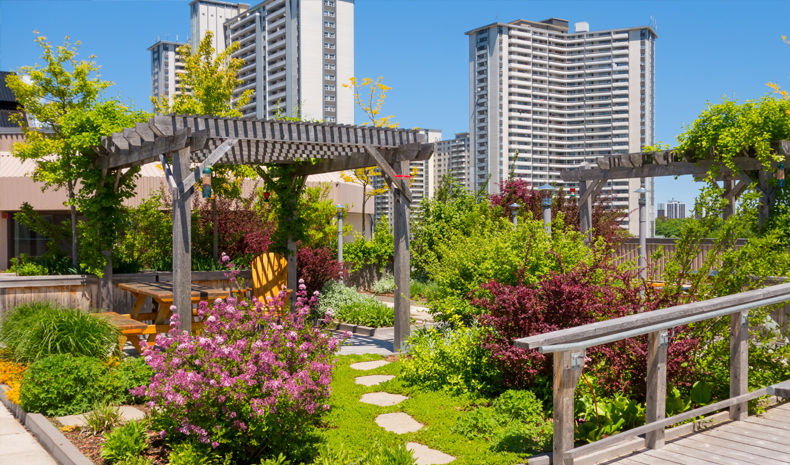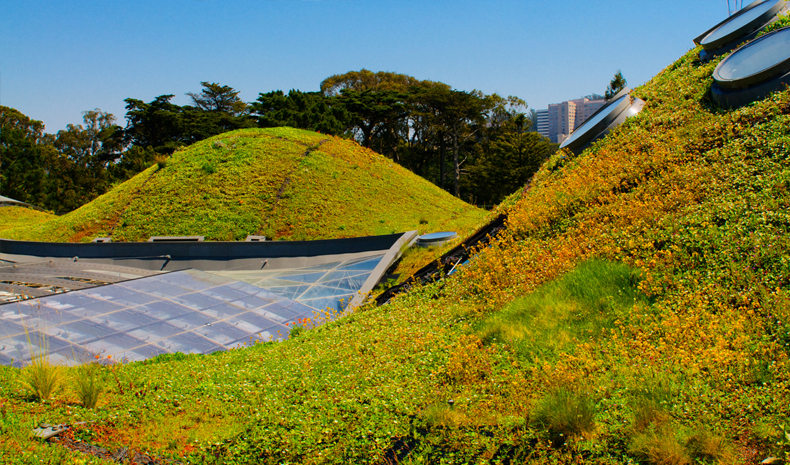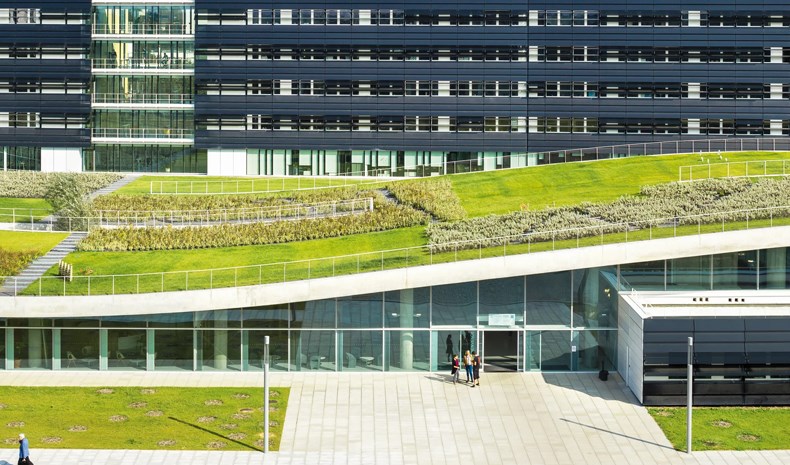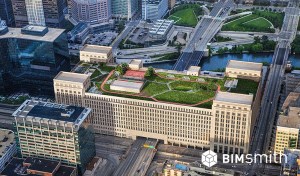Rooftop gardens are quickly gaining popularity across the globe, with traditional landscape design becoming innovated – and elevated.
Adding green spaces has always been a solution to livening up the otherwise potentially sterile feel of a city. However, in the age of sustainability, these green roofs serve more purposes than ever before.
Rooftop gardens have evolved from residents and property owners building makeshift ‘backyards’ atop their dwellings to large-scale environmental initiatives. These green roofs can serve purely decorative purposes, but the concept has been adapted by residential, industrial, and commercial structures alike.
The question is: do green roofs actually make a difference?
Let's find out.

Image source: istock
The Cooling Effect of Green Roofs
Man-made structures like buildings and roads reflect the sun’s heat at a higher rate than natural landscapes. In urban areas with a high concentration of parking lots and structures with limited natural spaces, this heat builds, resulting in a “heat island” that is warmer, in relation to outlying areas. According to the EPA, green roofs have been scientifically proven to reduce heat islands, and not just marginally. Temperatures atop green roofs can be as much as 30–40°F lower than that of a conventionally finished roof, and can even reduce the ambient temperature city-wide by up to 5°F.

Image source: istock
The Energy Reduction of Green Roofs
In addition to cooling off urban areas, green roofs can also reduce the energy use of individual buildings. These rooftop gardens effectively act as an upper layer of insulation for buildings, making it easier to heat and cool the building. Savings on utility bills is a nice perk, but on a larger scale, reducing the peak electricity demand will continue to become more important over time. This is because growing cities create increased strains on power grids and more frequent power shortages. Plus, by lowering the demand for air-conditioning, rooftop gardens can result in a decrease in air pollution and greenhouse gas (GHG) emitted.

Image source: istock
The actual vegetation of green roofs also plays a role by removing additional pollutants and GHGs. After all, one of the first things we teach our children about plants is that they absorb carbon dioxide and release oxygen back into the environment. In fact, scientists at Boston University recently found that plants of rooftop gardens actually grew at a faster rate when placed near buildings’ air vents that carried out carbon dioxide (CO2) exhaled by the buildings’ inhabitants below.
The Carbon Dioxide Removal of Green Roofs
Many environmental and sustainability initiatives focus on reducing the amount of carbon emitted, but solutions like this that can remove carbon are increasingly important. A 2021 study out of Washington State University looked to measure the amount of CO2 sequestered from the air via the Green roofs in Seattle specifically. At the time of the study, Seattle was estimated to have 2,669,267 square feet of green roof space. Calculations put the estimated CO2 removed at 2,151,079 kg or 2,151 metric tons of CO2 per year!
The Water Management Impact of Green Roofs
Along with heat islands, as cities grow, permeable surfaces being replaced with impervious surfaces (like buildings and roads) can create drainage and stormwater runoff issues. Green roofs can help in a few ways. First, rooftop gardens reduce rainfall runoff by retaining water and eventually returning it into the air through evaporation. Through this process, green roofs even filter and clean pollutants from the water by feeding on excess nitrogen. Rooftop gardens can retain most storm-related precipitation, and what cannot be retained during peak flow periods is greatly delayed, decreasing the stress on city sewer systems.

Image source: istock
The Biodiversity Impact of Green Roofs
Green roofs are designed in many different ways. Whether filled with intentionally diverse plants, or a streamlined urban agriculture initiative, all rooftop gardens provide important natural habitats and promote biodiversity within urban settings. Besides the plants and soil microorganisms, these gardens can be a much-needed habitat for insects and birds. They can even act as crucial stopovers for migrating species, allowing more types to come into contact and promoting biodiversity and a healthy ecosystem.
The Future of Green Roofs
Many cities have green roof initiatives, and some countries (such as France, Switzerland, and Canada) have even passed laws and regulations that deem all new commercial and residential buildings to have at least a partly green rooftop. Although initially appreciated for purely aesthetic reasons, the impact of rooftop gardens is measurable and provable, and it is safe to say they are here to stay. With new construction projects around the globe, the innovation and design of these green roofs continue to reach new heights.
Sources:
https://bluegrasslawn.com/rooftop-gardens-how-green-are-they
https://eos.org/articles/rooftop-gardens-make-use-of-the-air-we-breathe-below
https://treescience.com.au/blog/benefits-rooftop-gardens/
https://www.conserve-energy-future.com/rooftop-gardens-benefits.php
https://www.mdpi.com/2075-5309/7/2/30/pdf
 BIMsmith is a free cloud platform for architects, designers, and building professionals to research, select, and download building product data. Search, discover, compare, and download free Revit families on BIMsmith Market, or build complete, data-rich Revit wall, floor, ceiling, and roof systems faster with BIMsmith Forge.
BIMsmith is a free cloud platform for architects, designers, and building professionals to research, select, and download building product data. Search, discover, compare, and download free Revit families on BIMsmith Market, or build complete, data-rich Revit wall, floor, ceiling, and roof systems faster with BIMsmith Forge.














